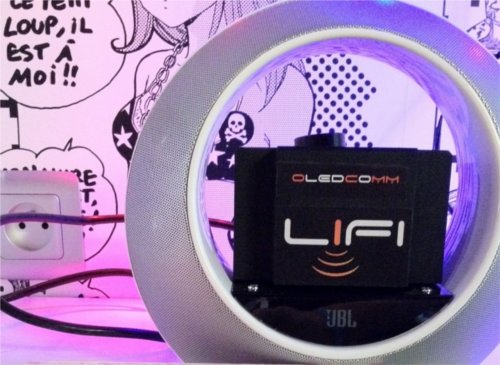Li-Fi, short for Light Fidelity, is a wireless data transfer technology first made popular by Harald Haas in his 2011 TED Talk. Now a Parisian company by the name of Oledcomm has announced that they'll have Li-Fi devices on the market sometime next year.

Li-Fi technology works by rapidly turning on and off a light source, creating binary code. The flashing of the light actually happens much faster than the human eye can detect, allowing for a Li-Fi data connection to resemble a simple LED bulb.
Sensors attached to computers or other smart devices collect the data as long as they're in the light's path. This leads to very specific areas in which Li-Fi can be used, ultimately meaning a more secure data connection — since someone would have to be sitting on your lap to steal it. This also means that, as opposed to Wi-Fi, Li-Fi is safe for locations that require low radiation — like doctor's offices or airplanes.
Li-Fi speeds are also way faster than traditional Wi-Fi. Oledcomm claims to have already achieved a 3 Gbps connection speed. Haas has also made the case for a whopping 10 Gbps connection in the near future. So, if screaming-fast download speeds coming out of your desk lamp sound good to you, keep your eyes peeled for those Li-Fi devices possibly hitting shelves next year.
